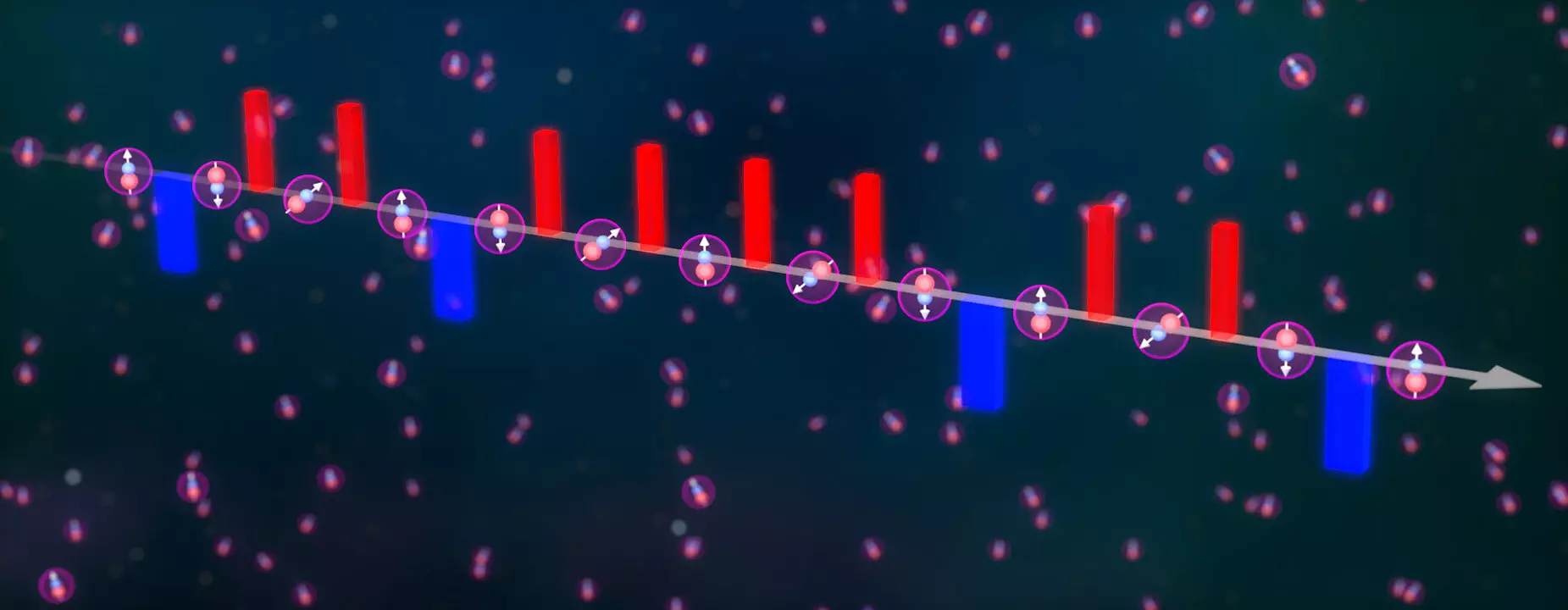In the vast realm of physics, the behaviors of quantum spins play a crucial role in understanding and potentially leveraging phenomena such as superconductivity and magnetism. Despite the theoretical richness of these interactions, recreating them in laboratory settings remains a formidable challenge for scientists. A recent publication in *Nature* highlights a groundbreaking exploration led by Jun Ye, a noted physicist at the University of Colorado Boulder, alongside researchers from Harvard University. Their work showcases how periodic microwave pulses can finely tune interactions between ultracold potassium-rubidium molecules, opening exciting possibilities for experimentation within many-body quantum systems.
At the core of this research lies the innovative technique known as Floquet engineering. Analogous to a “quantum strobe light,” this approach permits scientists to exert control over quantum systems by introducing periodic microwave pulses. Such manipulation not only alters the characteristics of the particles involved but also enables scientists to observe distinct quantum phenomena. The use of Floquet engineering embarks us on a journey beyond conventional methods, heralding a era where the dynamic nature of quantum systems can be precisely orchestrated. This marks a significant leap forward in the field of quantum mechanics, offering new avenues to probe quantum many-body physics that were previously inaccessible.
The experiment primarily focused on ultracold potassium-rubidium molecules, which possess a unique polar structure. This polarity presents an appealing platform for quantum simulations, as the rich energy landscape of polar molecules allows for a variety of interactions. Calder Miller, a graduate student involved in the research, noted the potential these molecular interactions have in discerning new physical phenomena. By fine-tuning these interactions through Floquet engineering, researchers hope to fabricate entangled states that can subsequently enhance our sensitivity to nuanced physical effects within quantum systems.
As researchers prepared their molecular counterparts, they encoded quantum information in the two lowest rotational states of the molecules. Initiating the process with an initial microwave pulse, the molecules fell into a quantum superposition, setting the stage for an exploration of complex spin interactions, notably the XXZ and XYZ spin models. These models serve as key frameworks for examining how particle spins interrelate, an effort fundamental for advancements in material science and magnetic phenomena.
To make sense of the intricate spin interactions at play, visualizing the relationships among spins becomes imperative. Instead of relying solely on the abstract mathematical constructs like the Bloch sphere, one can conceive of the molecules as dancers, changing their movements based on the influence of their partners. This analogy illuminates the dynamic nature of spin interactions: molecules may alternate between drawing closer or pushing away from each other, a behavior reflecting variations in quantum spin orientation.
Utilizing the periodic microwave pulses akin to a strobe light, researchers fine-tuned the interactions among the potassium-rubidium molecules. As a result of these manipulations, the team observed significant shifts in spin dynamics, akin to the effects produced by external electric fields. Nevertheless, what made Floquet engineering particularly promising is its capacity to generate less symmetric interactions, a feature not feasible through conventional electric field applications.
Among the pivotal observations made during this study were the two-axis twisting dynamics—an essential aspect of their work. Here, the quantum spins are shifted along two independent axes, facilitating the generation of highly entangled states. This manipulation stands to enhance not only quantum sensing capabilities but also precision measurements across various fields. The notion of reducing uncertainty in one quantum component while augmenting it in another taps into intricate behaviors that can propel spectroscopic experiments forward, providing high fidelity and greater resolution.
Miller recalls the palpable excitement when the first hints of two-axis twisting emerged, underscoring the uncertainty that initially surrounded this development. After diligent effort, the team was elated to confirm their findings within a remarkably brief timeframe. This underscores not only the complexity of quantum manipulation but also the potential for rapid advancements in this cutting-edge field.
Looking ahead, the researchers acknowledge that while their initial experiments are promising, the ultimate goal is to enhance detection methods that could substantiate the presence of entangled states within the system. Collaboration continues within the broader scientific community, as demonstrated by another team at JILA led by professor James Thompson, who employed a different approach using cavity quantum electrodynamics to also explore two-axis twisting. The shared trajectory of innovation highlights the collaborative spirit that drives the field of quantum physics forward.
As our understanding of quantum spins deepens and our experimental capabilities expand, the implications for technology, fundamental physics, and potential quantum computing paradigms become increasingly profound. The evolution of highly controllable quantum systems might one day pave the way for breakthroughs that expand the boundaries of what is possible in science and technology. The advancements observed in this recent study mark only the beginning, urging the scientific community to delve deeper into the captivating world of quantum mechanics.


Leave a Reply